Friday, 2:00pm
5 July 2024
Seven artefacts in search of a museum
Design Discoveries: Towards a Design Museum Japan
Japan House, 15 May – 8 September, LondonIf Japan had its own design museum, what would it include? Janet South reports from ‘Design Discoveries’
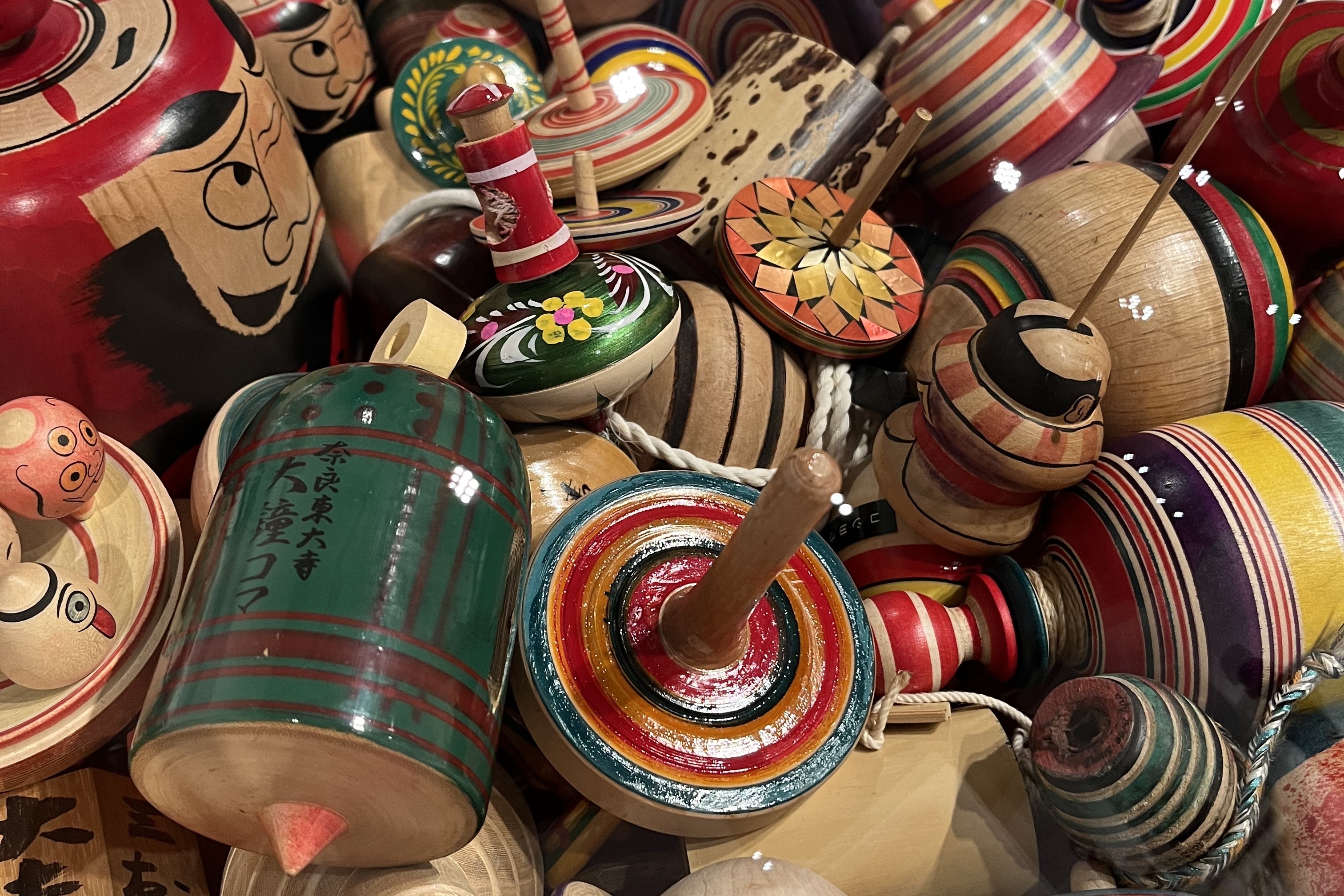
Surprisingly, for a culture long associated with good design, Japan does not have its own design museum, writes Janet South.
But if there were one, what would you choose to display in it? This is the question posed by Japan House, which, alongside broadcaster NHK, have asked seven prominent Japanese creators for their selections. These are the basis for ‘Design Discoveries: Towards a Design Museum Japan’, a free exhibition currently showing at Japan House London.
The designers and their chosen treasure are each presented on a white foam display cube which gives some background to the decision-making process and explains the item’s significance in Japanese culture. Text is displayed on every side of the cubes, encouraging the visitor to walk around and engage fully with the story.
The seven choices are wide-ranging from simple pottery to advanced textiles and ‘sonic experiences’ and span 10,000 years of designs from many regions of Japan, each with their own unique connection.
Spinning top. All photos by Janet South except where noted.

Filmmaker Tsujikawa Kōichirō has chosen spinning tops which, as toys, are often our first contact with design. He recalls his own tippe top from childhood and the memories associated with it.
Jōmon Pottery.
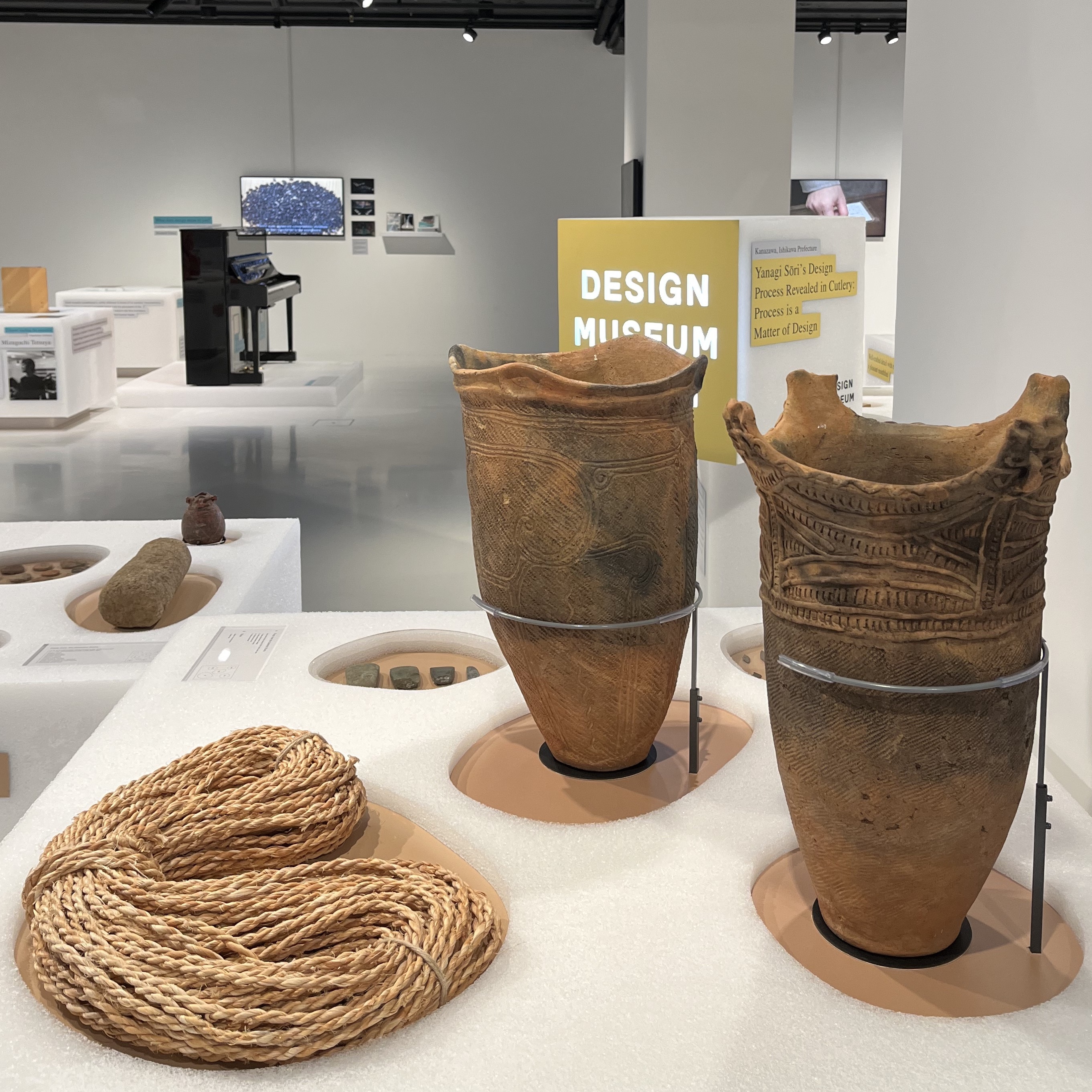
Architect Tane Tsuyoshi selected earthenware from the Jōmon Period more than 10,000 years ago. These robust pots were hand-built without a wheel and decorated using rope-work – Jōmon means cord-pattern.
Shrine ornaments.
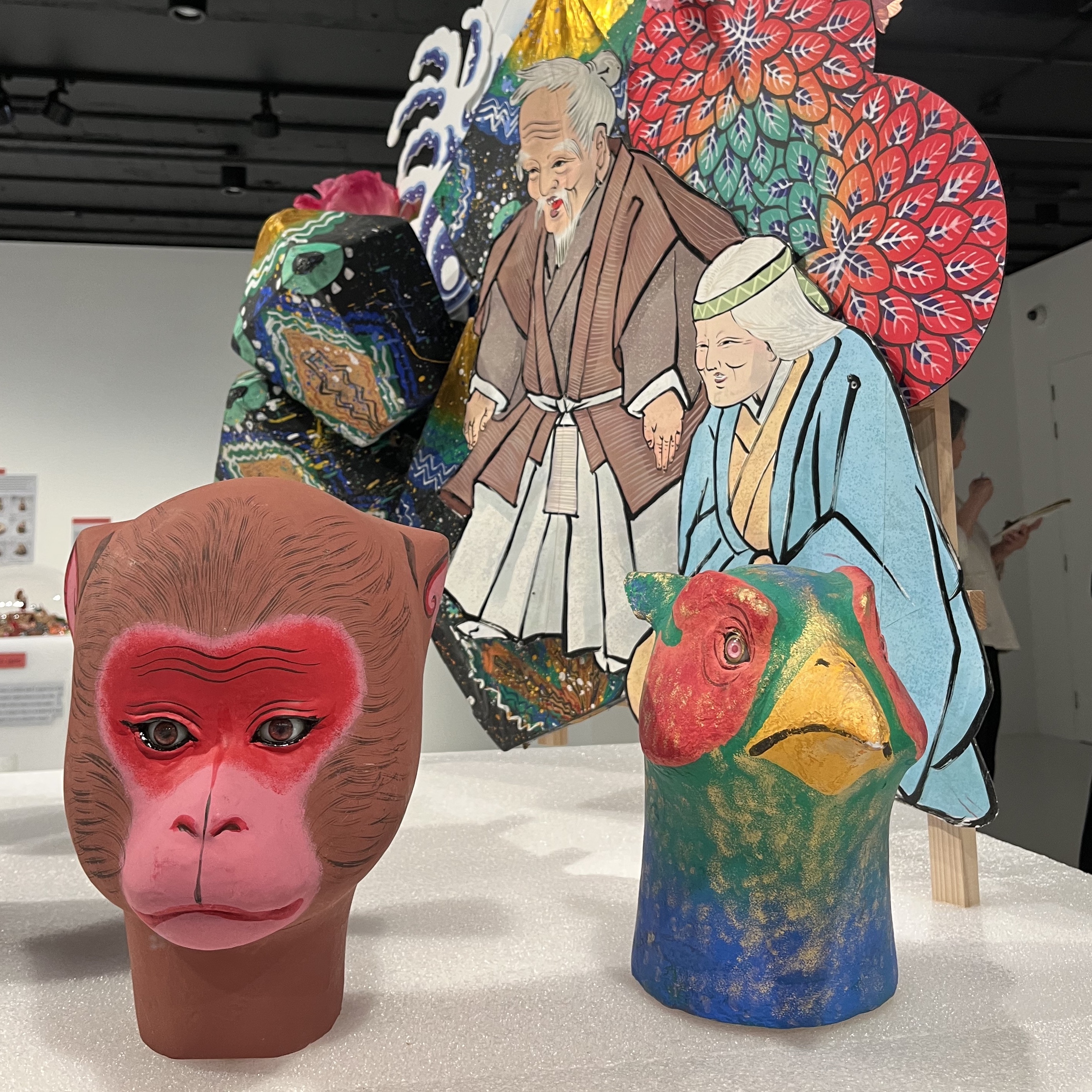
Fashion designer Hirokawa Tamae looks to the 700-year-old Hakata Gion Yamakasa Festival in Fukuoka calling it ‘a pillar that connects the past, present, and future’. Yamakasa are portable, decorated shrines carefully crafted by the doll makers of Hakata using colourful figurines drawn from all ages of popular culture.
Yanagi Sōri spoons.
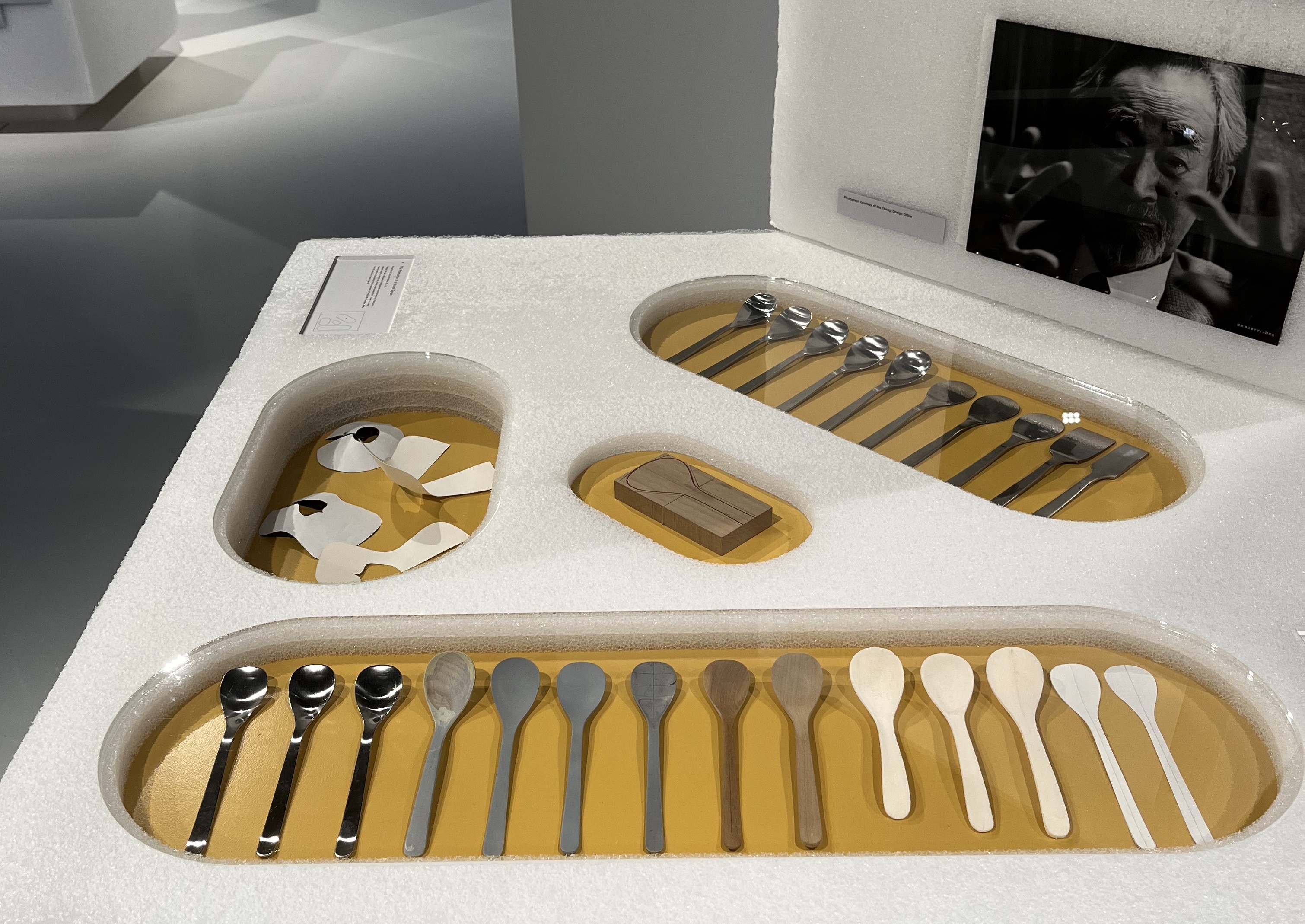
Tagawa Kinya, co-founder of international design agency Takram, and Honorary Fellow of the Royal College of Art (UK), picks ‘Yanagi Sōri Cutlery’ from Ishikawa. Sōri (1915-2011) was one of Japan’s most revered product designers; Tagawa delves into Yanagi’s design of a single spoon.
Rugby Shirt kit inspired by lantern.

Textile designer Sudō Reiko looks at 3D sportswear inspired by the enormous paper lanterns paraded in Toyama’s Yotaka Andon Festival. The shirts displayed were worn for the 2019 rugby world cup in Japan and use motifs of a samurai helmet, cherry blossoms and golden lines which depict sunrise over Mount Fuji.
Priestess of Kagoshima garment.
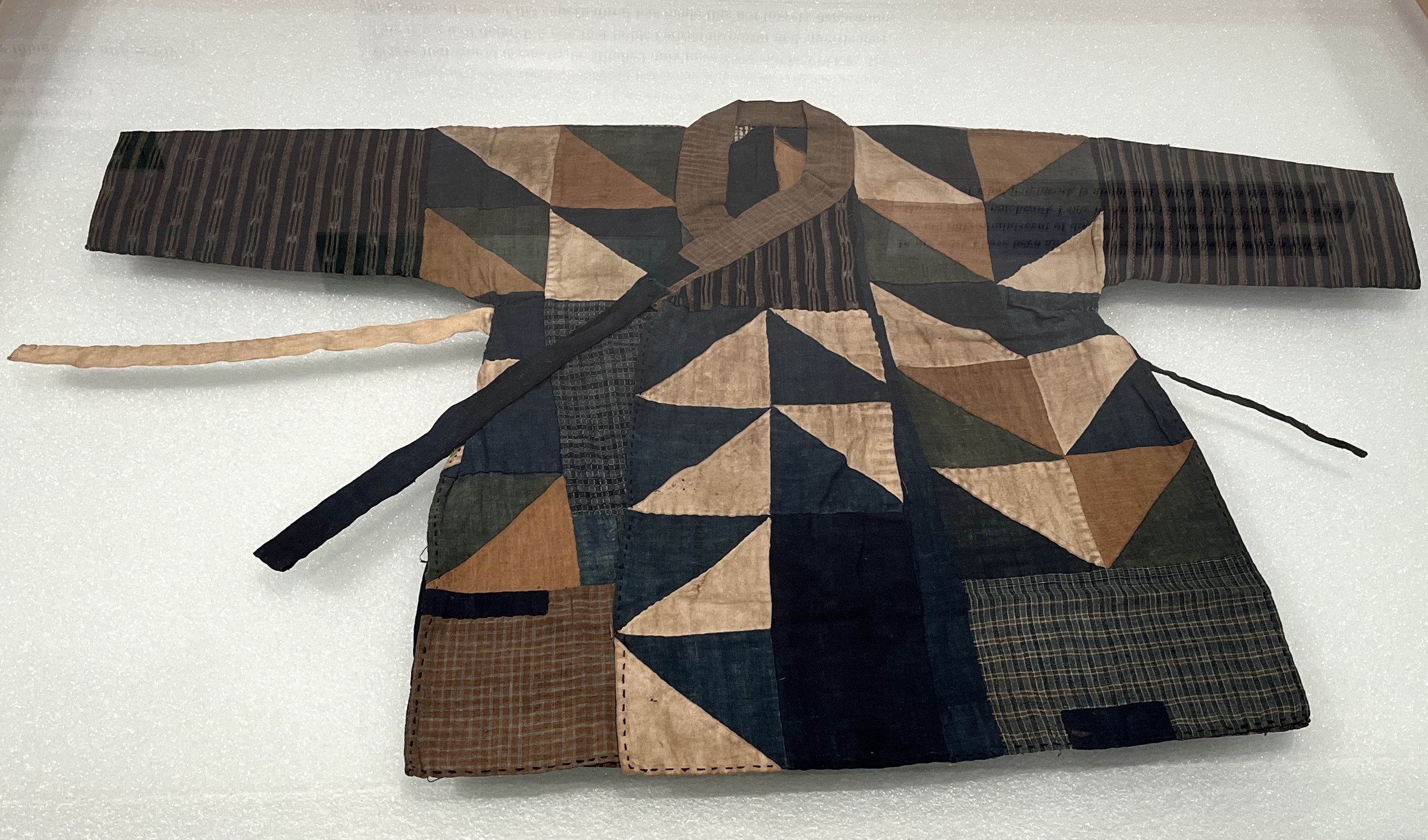
Fashion designer Morinaga Kunihiko has chosen a garment worn by young girls training to be priestesses in Amami. Worn during rituals, the Haburagin is a patchwork of fabric using cuttings from many different kimonos. Each triangle resembles a butterfly (or habera) which were thought to be floating spirits of ancestors and would protect the wearer.
Yamaha Transacoustic piano from Shizuoka.
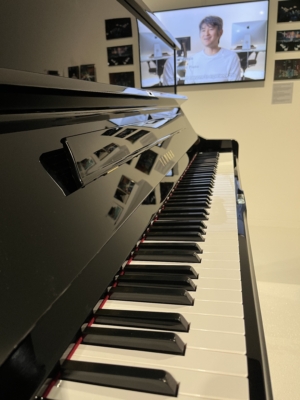
Architect and ex-Sega videogame designer Mizuguchi Tetsuya suggests a ‘transacoustic piano’ from Shizuoka, in which a transducer fitted to a piano soundboard converts audio into vibration creating a sonic experience that can be felt through the entire body.
‘Design Discoveries’ exhibition. Photo: Japan House.
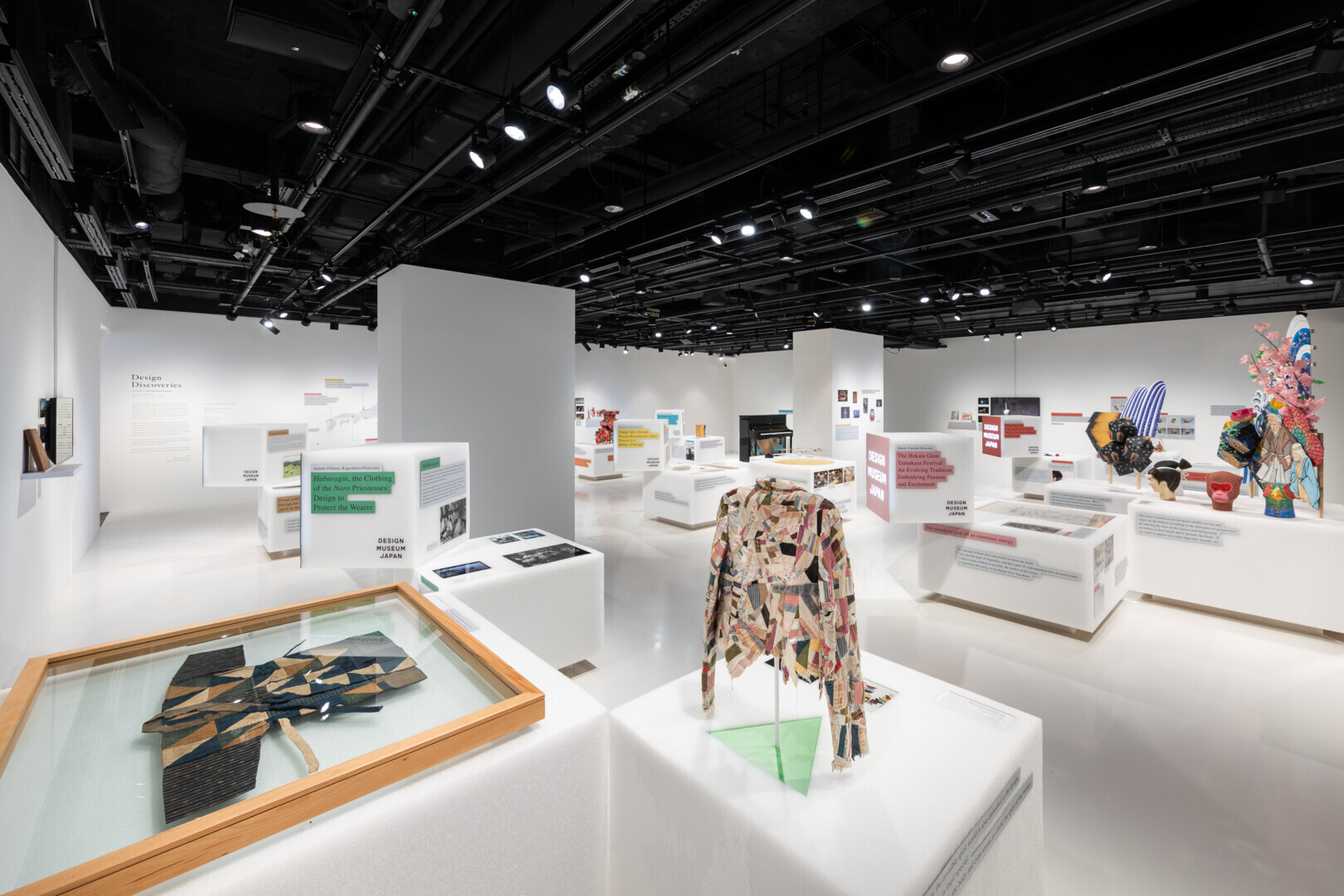
The exhibition invites visitors to contribute thoughts on their own experience of design and share their places of inspiration on an interactive map.
What does design mean to you? Photo: Japan House.
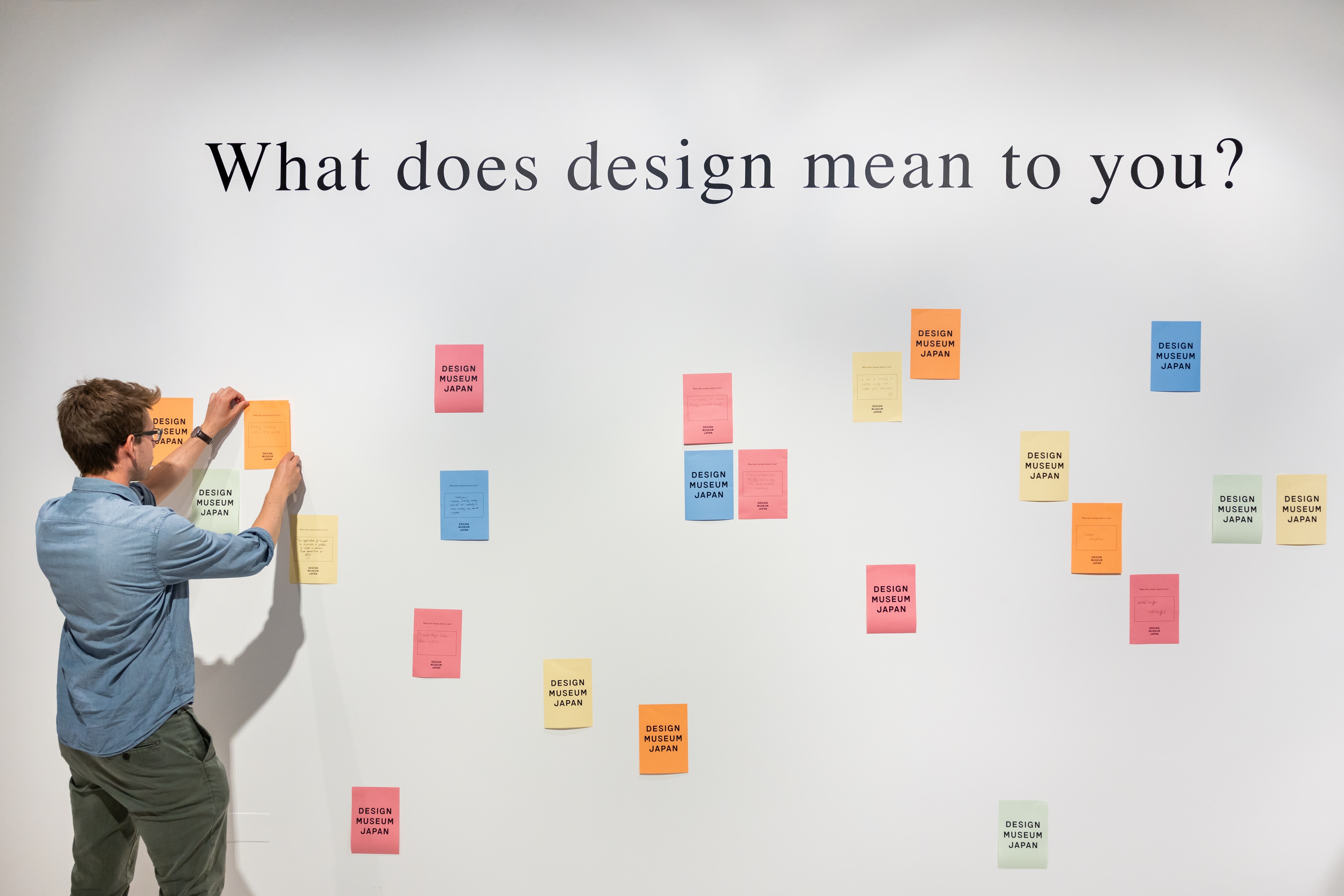
Kuramori Kyōko, a director of the Japan Design Museum foundation, is keen to see the walls covered with visitors’ responses on sticky notes. She hopes that their visitors’ enthusiasm for design will strengthen her argument for a national design museum for Japan.
Kuramori Kyōko.
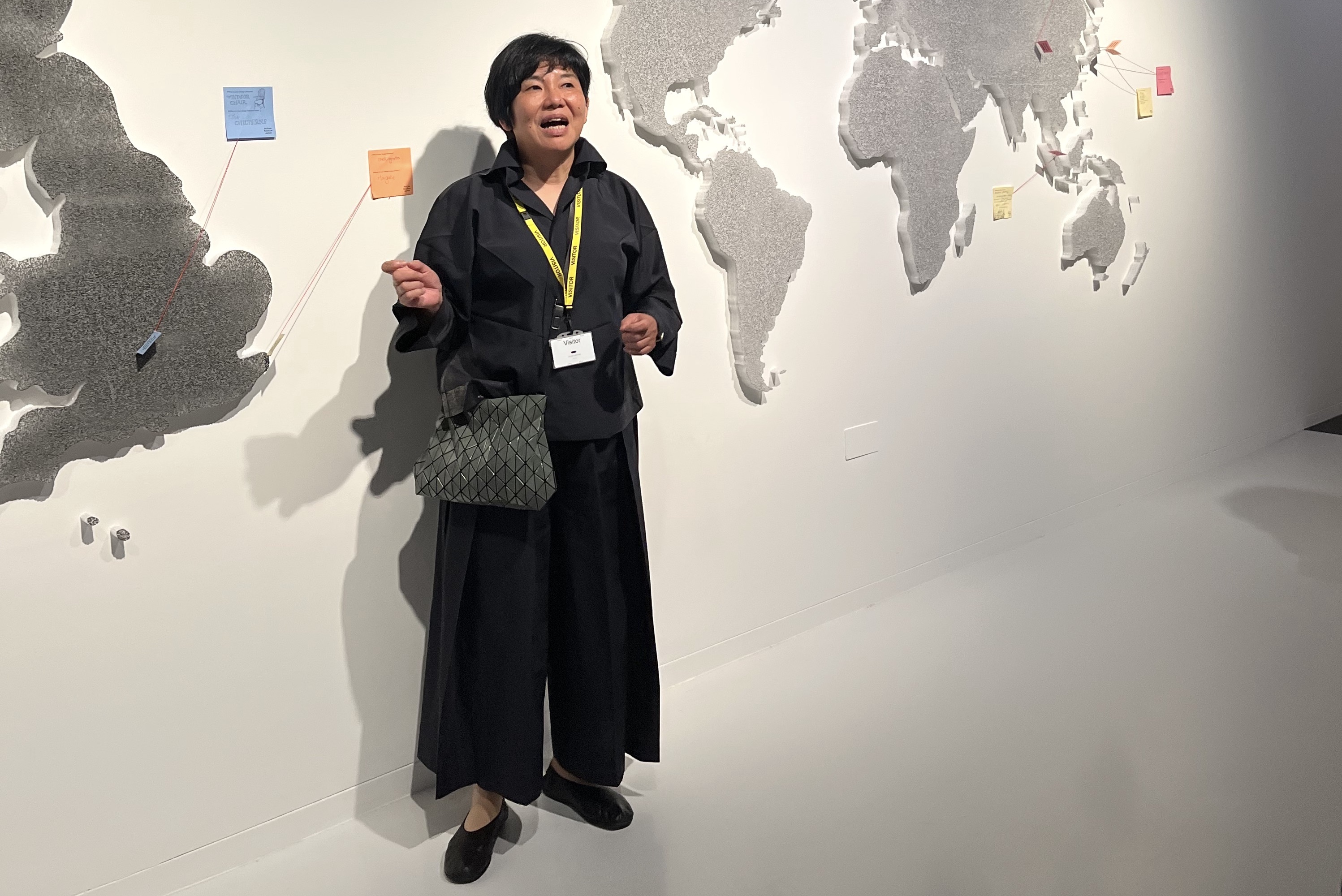
Japan House has curated global exhibition programmes at their venues in London, São Paulo and Los Angeles over the past five years bringing Japanese culture to the international community. Exhibitions at Japan House in London are free and there is a café, Akira Restaurant, and a shop.
Thanks to Kuramori Kyōko, Simon Wright and Eyre Kurasawa.
Photo: Japan House.
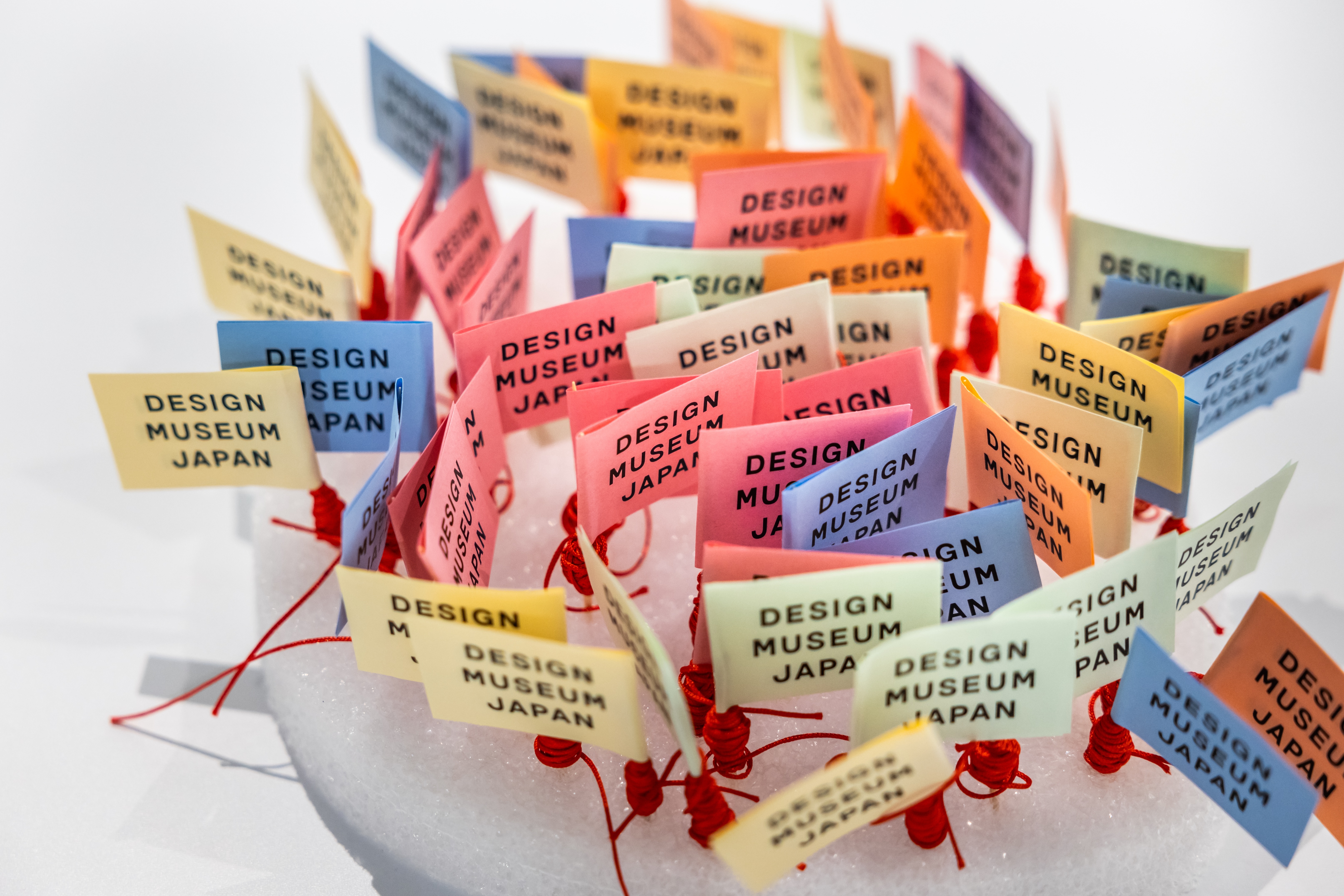
Eye is the world’s most beautiful and collectable graphic design journal, published for professional designers, students and anyone interested in critical, informed writing about graphic design and visual culture. It is available from all good design bookshops and online at the Eye shop, where you can buy subscriptions and single issues.
